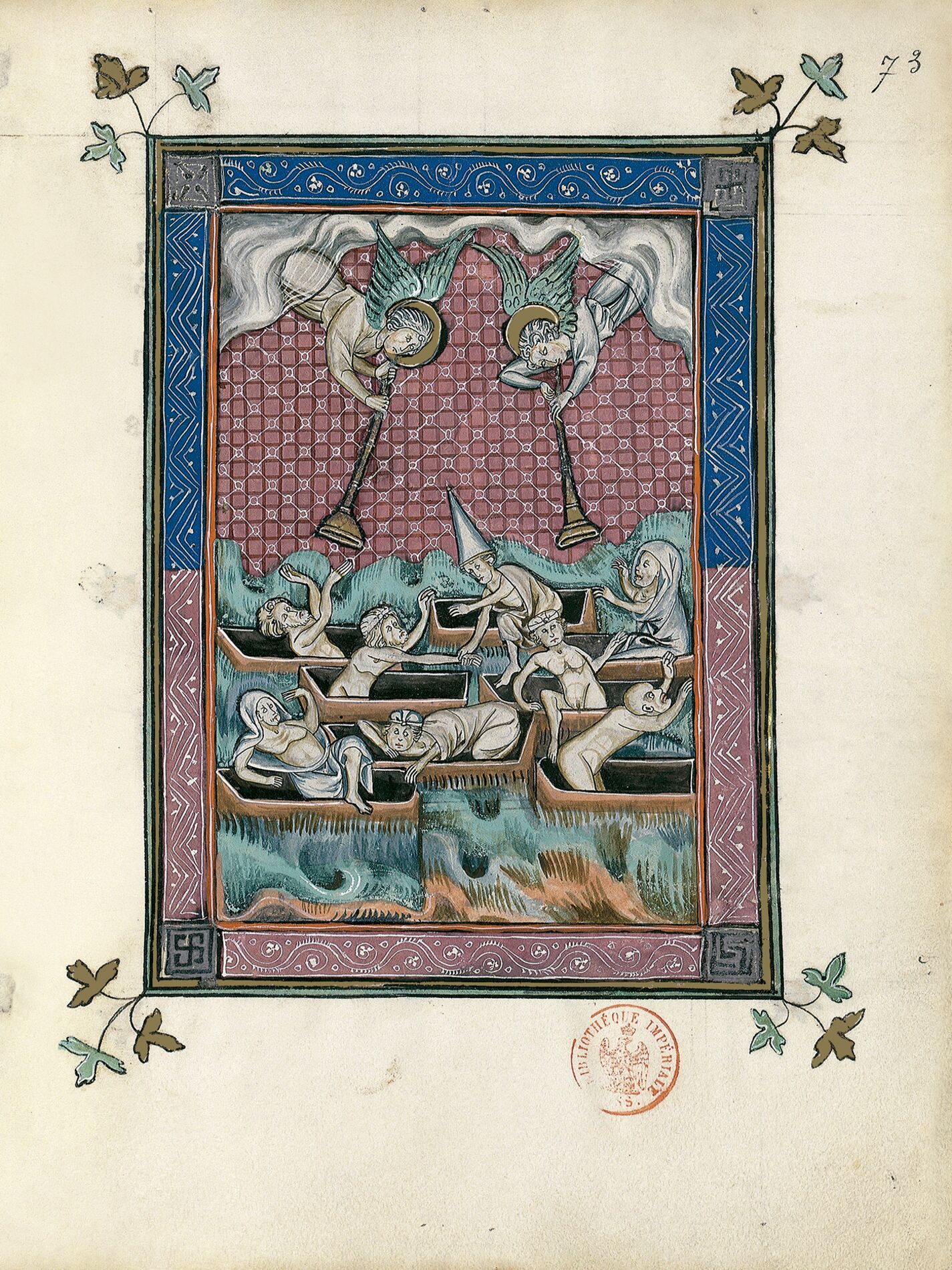The illuminator depicts a cross-section of humanity joyful at coming back to life: behind an old woman still partly enveloped in her shroud and a naked man raising his arms in thanks to heaven, a youth stands up painfully whilst a young girl steps over the walls of her tomb. A pope with a pointed tiara is already standing on the ground.
The variety of postures, physiognomies and anatomies accentuating the different ages and the headdresses of fabric wound round the heads of the deceased make this scene with its universal message endearing. The artist’s white highlights emphasise the milky whiteness of the bodies. Although western tradition had for many years depicted the souls of the chosen ones as naked children, this painting aims above all to celebrate the virtues of the miracle of the Incarnation and the “glorious bodies” of the saints.
Marie-Thérèse Gousset and Marianne Besseyre
Illuminated Manuscripts Research Center, Bibliothèque nationale de France
Fragment of the Apocalypse of 1313 commentary volume

The illuminator depicts a cross-section of humanity joyful at coming back to life: behind an old woman still partly enveloped in her shroud and a naked man raising his arms in thanks to heaven, a youth stands up painfully whilst a young girl steps over the walls of her tomb. A pope with a pointed tiara is already standing on the ground.
The variety of postures, physiognomies and anatomies accentuating the different ages and the headdresses of fabric wound round the heads of the deceased make this scene with its universal message endearing. The artist’s white highlights emphasise the milky whiteness of the bodies. Although western tradition had for many years depicted the souls of the chosen ones as naked children, this painting aims above all to celebrate the virtues of the miracle of the Incarnation and the “glorious bodies” of the saints.
Marie-Thérèse Gousset and Marianne Besseyre
Illuminated Manuscripts Research Center, Bibliothèque nationale de France
Fragment of the Apocalypse of 1313 commentary volume